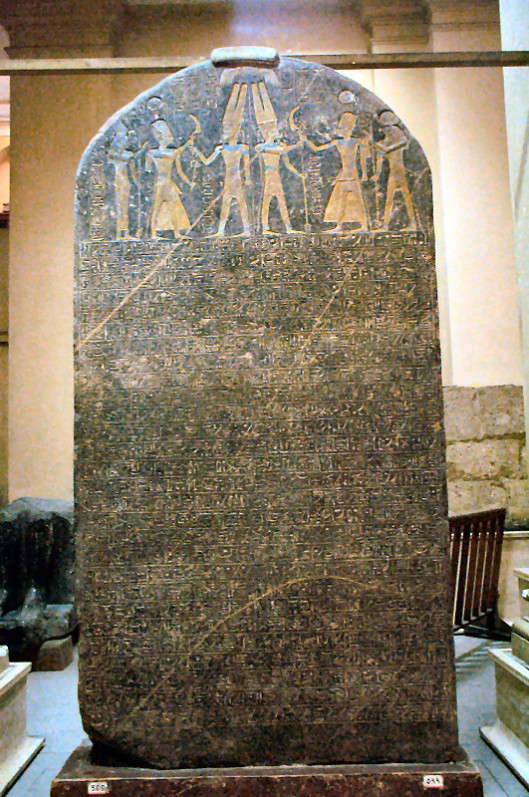I have just purchased Philip R. Davies’ Memories of Ancient Israel and got a bit of a shock when I read this about the Merneptah Stele:
After mentioning Canaan, and three Canaanite cities of Ashkelon, Gezer, and Yanoam, it runs, “Israel (?) is wasted, its seed is not.” Assuming we have Merneptah’s dates correctly as 1213-1203, and that the reading “Israel” is correct, the reference places an Israel in Palestine in the thirteenth century. The word read (probably correctly) as “Israel” also has a sign indicating a people and not a place. That makes the alternative reading “Jezreel” less likely — though Hebrew “s” and “z” could both be represented by the same Egyptian letter; also, since “Jezreel” is partly made up of the word for “seed,” the inscription could be a pun by a Semitic speaking scribe. It might also be considered that Merneptah would find it easier to fight in the plain of Jezreel than in the highlands. (pp. 90-91)
Why, after so many years of interest in the bible and archaeology, did I not know till now that there was an alternative possible reading to Israel in the Merneptah stele? Other questions have been raised commonly enough, but not that particular one — at least not widely in readily accessible public literature.
Here is one translation with, as per Davies, “Israel (?)” in context:
Tjehenu is vanquished, Khatti at peace,
Canaan is captive with all woe.
Ashkelon is conquered, Gezer seized,
Yanoam made nonexistent;
Israel is wasted, bare of seed,
Khor is become a widow for Egypt.
All who roamed have been subdued.
So well known and “secure” is this monument’s reference to “Israel” that it is even widely known as, simply, the “Israel stele”. The wikipedia article will cast not a shred of doubt on this reading. A cited webpage from that article with a full text and translation is just as dogmatic in its assurance of this reading.

This possibility of an alternative reading, even if the majority of scholars and others take the translation “Israel” for granted, is significant and worth drawing to everyone’s attention given the other anomalies associated with the stele and that are well known:
- If the monument speaks the truth, that Israel is annihilated, then biblical Israel never got started as a nation. But, of course, exaggeration is common enough in political propaganda — in any age. Alternatively, another people may have taken the name Israel after the demise of those mentioned by Mernepteh.
- There is little indication in the stele to inform us about the nature of the reference “Israel”, or the location to which it refers. See my vridar.info notes on the Mernepteh Stele from Davies’ earlier book, In Search of Ancient Israel.
- There is no biblical reference to any event involving a clash between Israel and Pharaoh Mernepteh (or any Pharaoh of Egypt) in the thirteenth century. This is, presumably, the time of the biblical “Judges”, or even of the period of Joshua’s conquest.
 I have seen so many references to this Mernepteh stele over the years and not once, till this week, did any of them give me the slightest indication that there was simply no room for debate about its reference to “Israel”.
I have seen so many references to this Mernepteh stele over the years and not once, till this week, did any of them give me the slightest indication that there was simply no room for debate about its reference to “Israel”.
I don’t think I would be the only one who is attracted to the possibility of the original reference being Jezreel, with a pun on the “without seed” beside it — and would be open to suggestions that such a personification in the pun could explain its reference to being a people, not a place.
But this is not the only stele with “issues”. Davies also surfaces many questions over the Shalmaneser (Kurkh) stele, the Sennacherib inscriptions, and even the Hezekiah “Siloam” tunnel supposed-inscription — and others. Will discuss one by one in future posts.
Is it valid to be reminded of religious scholars continuing a proud tradition, that can be traced back to the middle ages, of keeping the lay masses in ignorance?
